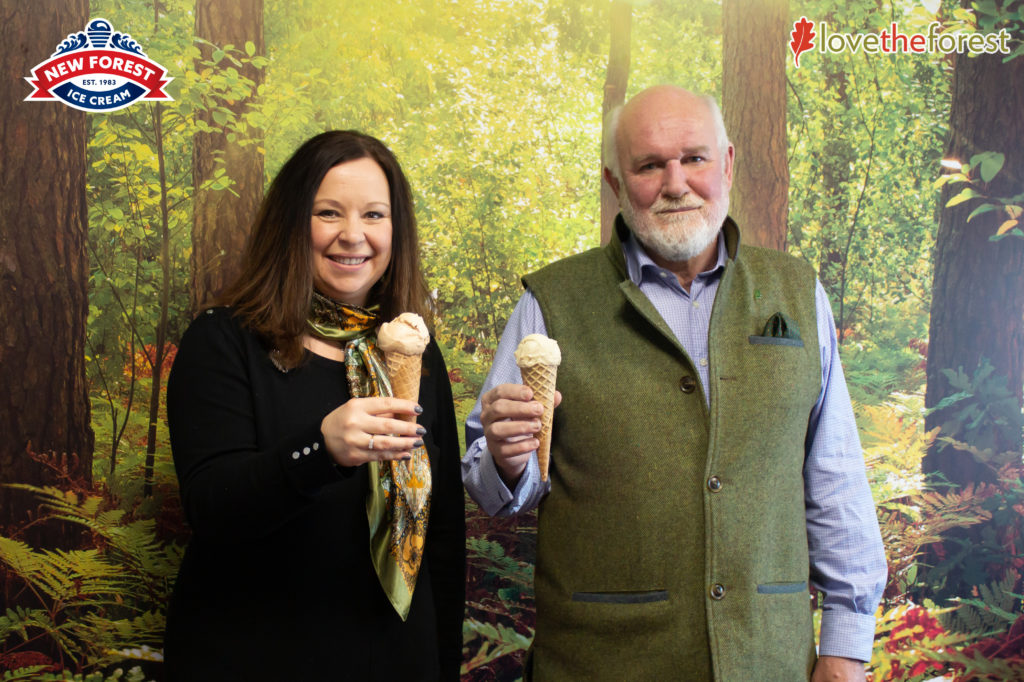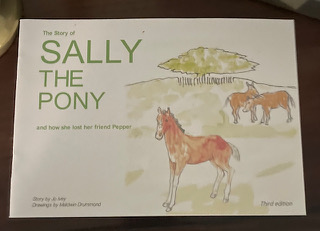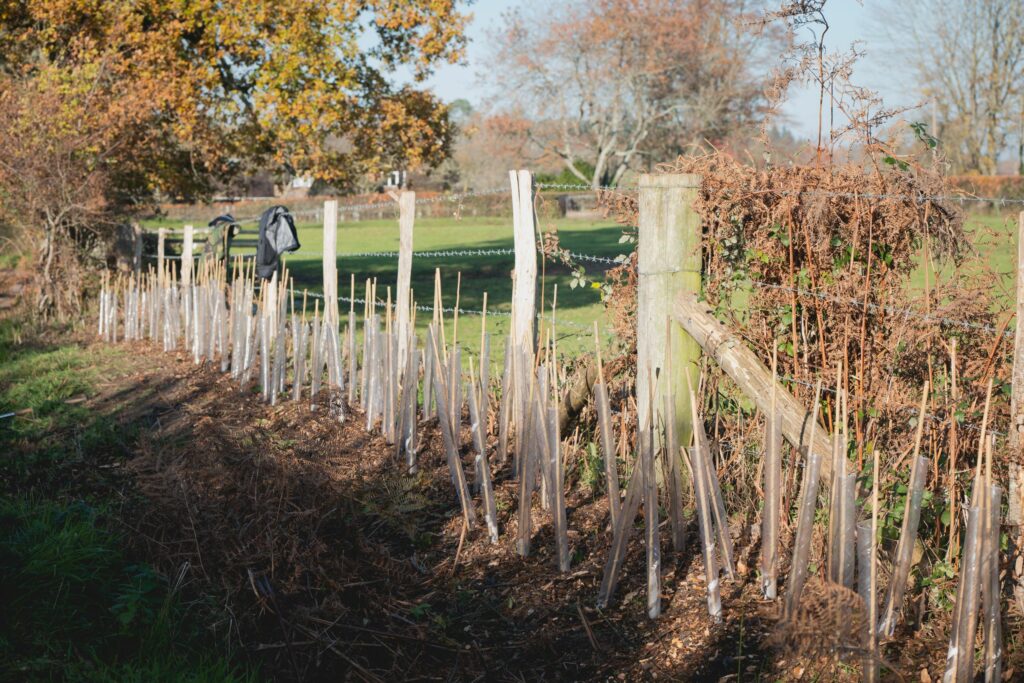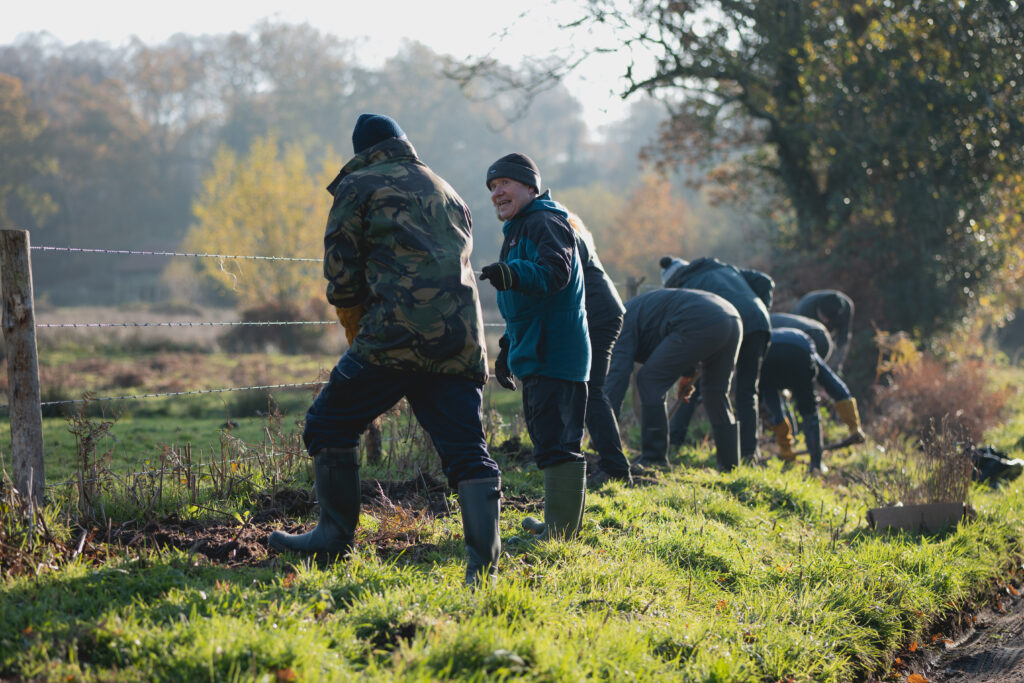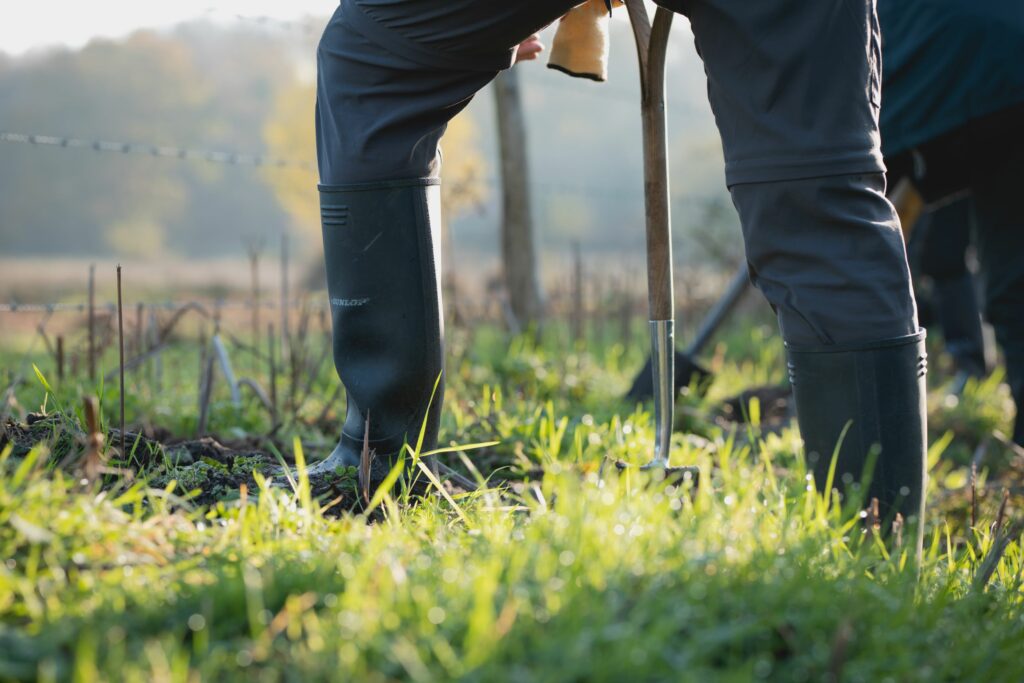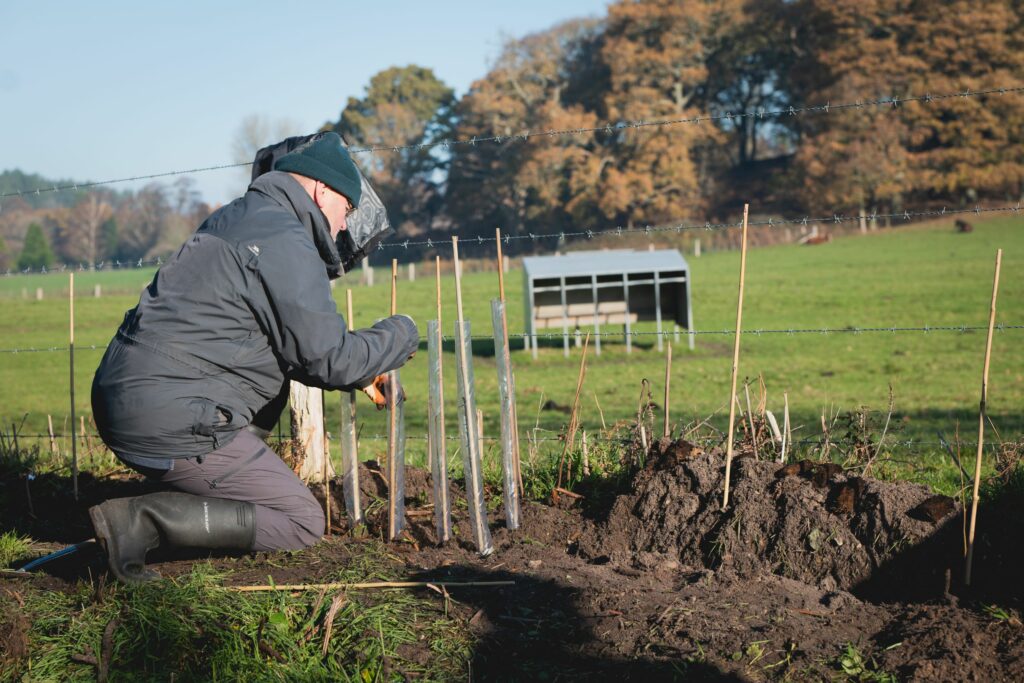Author Archives: New Forest Trust
Animal Accidents
The reduction of animal accidents on the roads across the Forest is something in which the New Forest Trust is heavily invested.
Each year we work with the National Park and support the animal safety campaign, and with a generous donation from The Pig Hotel this summer we were able to fund the re-printing of the brilliant ‘Sally the Pony’ storybooks which we help distribute across the Forest.
It therefore gave us a huge amount of pleasure to award the New Forest Trust Diamond Jubilee Award for 2023 to Gilly Jones at the New Forest and Hampshire County Show in July – Gilly has worked tirelessly for many years to reduce animal deaths and injuries across the Forest, and her work has made a real difference to the speed of traffic in the Forest which means that all of us, including the livestock, are safer – thank you Gilly and congratulations!
New wildlife corridor hedgerow planted to honour the late Queen
The New Forest National Park Authority, its volunteers and the New Forest Trust worked together to plant a hedgerow in honour of the Queen’s Jubilee.
The new hedgerow is on land adjacent to Rockford Common in the north west of the New Forest , which is part of The New Forest Site of Special Scientific Interest. (Special Protection Area and Special Area of Conservation if you want to lay it on!)
The Rockford Farm site, managed by the New Forest Trust, qualified for a Woodland Trust scheme as part of the Queen’s Green Canopy – a nationwide project set to plant one million trees and hedgerows across the country as a living legacy of the late Queen Elizabeth II.
National Park volunteers spent a day planting hawthorn, hazel, rowan, birch and oak along the hedge line with stakes and protectors to help them grow and protect them from rabbits.
The ground was then covered in chippings to stop aggressive weeds competing with the new planting
Paul Walton, the National Park Authority’s Head of Environment and Rural Economy, said: ‘Hedges are a vital part of the countryside’s ecosystem, offering berries and nuts for wildlife whilst also providing a protective corridor for animals to move between habitats.
‘A healthy hedgerow will be rich in species, including native shrubs and can provide bird nesting sites as well as a home for some of our rarer animals including hedgehogs and newts.’
Trees and hedges are best planted in the winter months, with the final plants and seeds of the Queen’s Green Canopy being sown by March.
Elsewhere on the site the Trust has already planted a new hedge on the northern boundary linking an existing hedge with adjacent woodland. The roadside hedge had declined in recent years. Much of it was elm which has declined throughout England because of Dutch Elm disease. Where it survives the Trust have started layering the plants in an effort to keep this species alive. Trustee of the New Forest Trust Diana Westerhoff said: ‘Once grown, the new hedgerow will fill a gap previously overtaken by bracken along the boundary of the site and will help our wildlife for generations to come.
‘This project demonstrates a perfect example of collaborative partnership work across the New Forest. We would like to thank the volunteers for their hard work, alongside The Woodland Trust which provided the plants as part of the Queen’s Green Canopy project and The Tree Management Company for contributing the chippings.’
For volunteering opportunities, visit the New Forest Volunteer Fair at Brockenhurst Village Hall on Sunday 29 January. See www.newforestnpa.gov.uk for details.
-ends-
Pine marten breeding confirmed in the south of England
Joint press release
Conservationists have discovered that pine martens, previously only thought to have survived largely in the North of England, are now well established in several areas of the New Forest and successfully breeding.
The evidence was uncovered in the second year of a long-term study to understand how these rare and protected creatures are recolonising the area.
Pine martens, a cat-sized member of the weasel family, were once widespread across the UK. Habitat loss and persecution reduced their numbers, with only small and fragmented populations remaining, mostly in northern England, Scotland, and parts of Wales.
A growing number of confirmed New Forest sightings over the last six years led to the creation of a long-term study. Led by Forestry England and Wild New Forest, with support from Hampshire & Isle of Wight Wildlife Trust and a grant from the Love the Forest scheme, the project will map and monitor the growing New Forest pine marten population.
The team uses a range of techniques to study these nocturnal creatures, including hidden cameras. Over 100 video clips were captured in 2022, including some showing young pine martens exploring and playing together, providing further evidence that they are successfully breeding.
The new clips also confirm initial findings that pine martens prefer to use fallen trees and branches to navigate across the forest floor and to cross streams and wet areas.
Leanne Sargeant, Senior Ecologist for Forestry England, said:
“The progress of pine martens in the New Forest is a real success story. It’s our goal to make sure the nation’s forests provide wildlife with places to thrive and expand. Here in the New Forest pine martens are doing just that. The survey makes it clear that they are settling in a wide range of areas and successfully breeding. We hope that knowing more about their development will help us support these rare creatures and inform reintroduction projects elsewhere.”
The team hopes to combine the video with other methods to assess the size of the population of pine martens in the New Forest. Mostly chestnut brown in colour, each pine marten has a uniquely shaped bib – a pale yellow section of fur on its chin and throat. This can help to identify individuals and, by observing their interactions, the team may also be able to monitor family groups.
Marcus Ward from the specialist conservation consultancy, Wild New Forest, said:
“It is incredibly rare to actually see a pine marten in the forest, even for someone like me who spends pretty much every day here. So, to have again captured so many clips of these amazing animals is incredible. This video gives us a unique view into their hidden world and an opportunity to really advance the understanding of these special creatures and how best to support them.”
The project will share its findings with the national pine marten strategy focussing on wider recovery of the species. The survey team are also being supported by the New Forest Badger Group and are keen for other organisations and landowners to get involved in the project.
Forestry England is helping to return lost species of wildlife as a key part of nature recovery across the nation’s forests. It is supporting a range of projects to help secure the return of pine martens and monitoring populations in the New Forest, Kielder Forest, Grizedale Forest and in the Forest of Dean, where England’s first reintroduction of pine martens began in 2019.
ENDS
Media Contact:
Susan Smith
Media Officer, South Forest District, Forestry England
susan.smith@forestryengland.uk
Notes to Editor
- Forestry England manages and cares for the nation’s 1,500 woods and forests, with over 363 million visits per year. As England’s largest land manager, we shape landscapes and enhance forests for people to enjoy, wildlife to flourish and businesses to grow. We are continuing the work we have already started to make the nation’s forests resilient to climate change and by 2026 we will:
- create at least 6,000 more hectares where we integrate wilding activities in our productive forests.
- increase the diversity of visitors to the nation’s forests and have one million hours of high-quality volunteer time given to the nation’s forests
- plant at least 2,000 hectares of new, high quality, predominantly broadleaf woodlands
- For more information visit forestryengland.uk Forestry England is an agency of the Forestry Commission.
About Love the Forest
The New Forest Trust (registered charity number 1099420) was founded in 2003 with one simple aim, to secure the future of the New Forest.
It gains financial support locally through donations and from the millions of people who visit the New Forest every year through the Love the Forest visitor giving scheme.
The money raised is used to fund projects that meet the Trust’s charitable aims to support conservation, education and commoning, with some projects being delivered directly and others by local organisations through the Love the Forest scheme.
Visit the New Forest Trust’s website for more information about how you can help care for the New Forest: www.newforesttrust.org.uk
Bring your conservation, commoning or education project to life with funding from Love the Forest
The Love the Forest scheme is inviting people to apply for grants of up to £5,000 for projects which help secure the future of the New Forest.
The Love the Forest scheme has recently funded a wide range of initiatives including providing litter picking kits for National Park ambassadors; enabling hundreds of volunteers to help with conservation tasks; printing the New Forest Code showing how people can help care for the Forest; and supporting the Hampshire and Isle of Wight Wildlife Trust in removing non-native plants from choking our rivers and streams.
Businesses across the National Park generously help raise the funds from their customers by adding a small donation to restaurant bills, accommodation, products and services.
William Ziegler, Chairman of the New Forest Trust registered charity, which runs the Love the Forest scheme, said: ‘The New Forest is one of the best places for wildlife in Europe with many rare species, all underpinned by the ancient tradition of commoning – with the grazing animals helping to shape the landscape.
‘Now we’re asking for schools, businesses and organisations to come forward with more innovative projects to help look after this internationally-important area.
‘We would also like to thank our partner businesses and their customers who have raised hundreds of thousands of pounds over the years to ensure the spectacular New Forest is protected for future generations.’
Grants of £50 to £5,000 are available and projects must meet one or more of the New Forest Trust charitable objectives:
- Promoting the conservation, protection and improvement of the New Forest
- Promoting the conservation and protection of the commoning livestock, the deer and other flora and fauna of the New Forest
- Promoting the education and understanding of the public in the commoning of livestock, of fauna and flora and the environment of the New Forest.
Find out more about how to apply here.
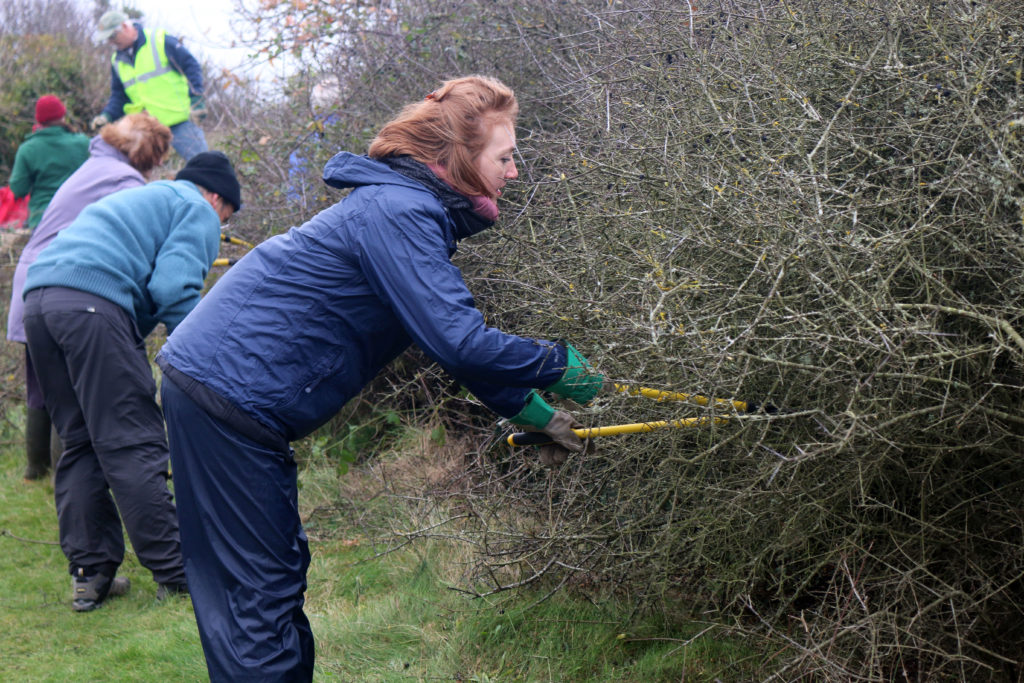
Love the Forest scoops new fundraising drive with New Forest Ice Cream
Love the Forest’s new fundraising drive has all the ingredients for success thanks to support from New Forest Ice Cream.
The Lymington-based family business on the edge of the New Forest National Park is giving a percentage of all scoop tub sales of its vegan salted caramel flavour to the Love the Forest scheme.
Love the Forest is part of the New Forest Trust charity, which secures the future of the New Forest through conservation and education projects as well as supporting the ancient tradition of commoning where animals roam free across the landscape.
Free from dairy, gluten and egg, the vegan alternative ice cream offers a rich, sweet taste of caramel enhanced by a pinch of salt. It can be found in many New Forest pubs and restaurants and also at scoop outlets in villages across the Forest and seaside.
New Forest Ice Cream Director Niki Jenman said: ‘We started supporting Love The Forest on our 30th Anniversary nine years ago as we wanted to help protect this precious landscape. Whilst family is at the heart of our business, our location is its soul. We are firmly rooted in the New Forest and the generous bounty of this unique location is evident in the quality and flavours of our ice cream. As a result, we have introduced numerous initiatives to help reduce our carbon footprint and to become even more environmentally friendly as well as giving back through Love the Forest fundraising, to ensure that this special location retains its beauty for many more generations to enjoy.
‘Other than vanilla, salted caramel is the top selling flavour across our scoop range so we hope it should really drive donations for the charity. Being vegan, this plant-based product seemed a good fit with Love the Forest’s nature conservation aims.’
Recent Love the Forest projects include supporting the 600 National Park volunteers who help with conservation, wildlife and heritage tasks; promoting the New Forest Code so visitors can help care for the Forest; and helping Hampshire and Isle of Wight Wildlife Trust to remove invading non-native plants from rivers and streams.
William Ziegler, Chairman of the New Forest Trust charity, which is behind the Love the Forest scheme said: ‘We are extremely grateful for New Forest Ice Cream’s continued support raising thousands of pounds for vital projects and this new vegan flavour has all the ingredients for success.
‘We hope all New Forest residents and visitors will enjoy this tasty way to show they Love the Forest!’
People can also donate online at: https://www.justgiving.com/newforesttrust.
If your business could support the Love the Forest scheme, please get in touch at admin@lovetheforest.org.uk.
